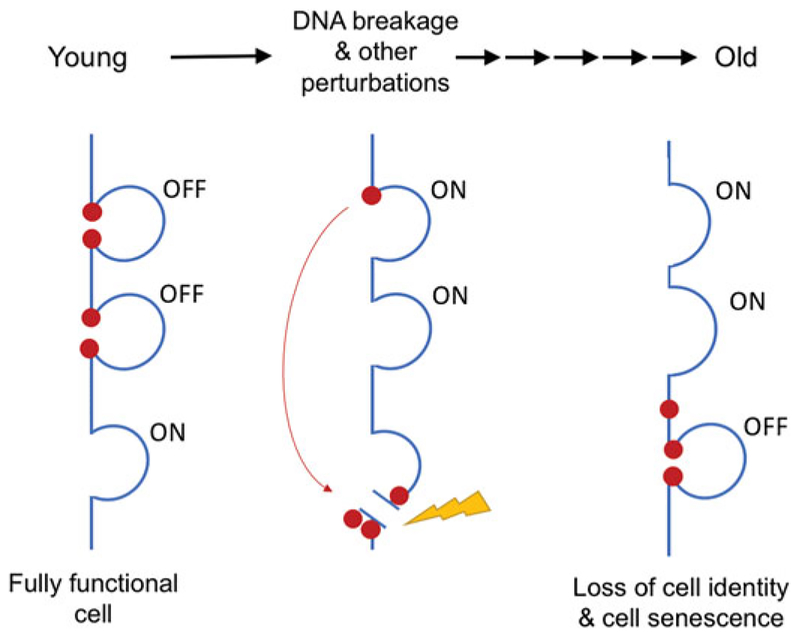Figure 2.
Relocalization of chromatin modifying factors. In young cells, chromatin modifying factors such as SIRT1 (indicated by red circles) are usually located at canonical loci where they act to modulate transcription. When DNA is damaged these factors are recruited to the site of DNA damage to assist in repair. Relocalization results in altered gene expression or activation of retrotransposons. Usually these factors return to where they came from once the DNA is repaired. After repeated responses to DNA damage, however, not all factors return to their original sites, resulting in the relocalization of chromatin modifying factors (RCM), changes to gene expression, and a loss of cell identity during aging (see the color version of this figure at www.tandfon-line.com/ibmg).

